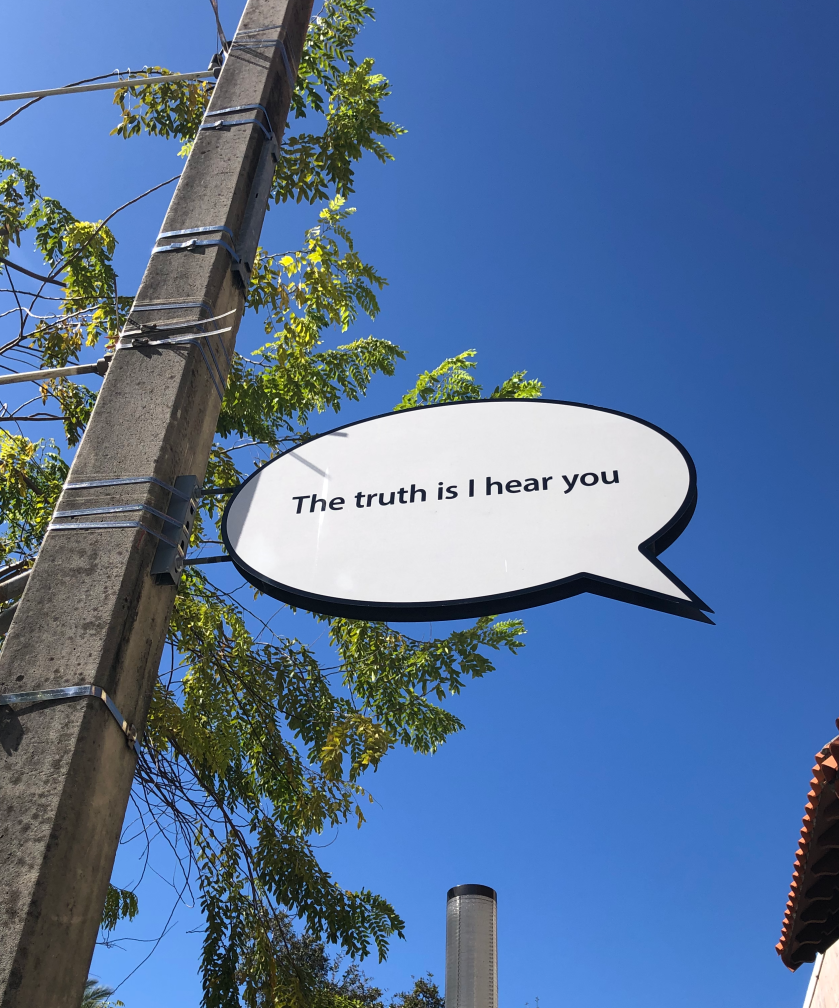
Joheily Rodriguez is a junior majoring in Biological sciences with minor in chemistry at Florida International University. Passionate about art, medicine and connecting with new cultures and individuals. She is involved in numerous leadership opportunities at FIU including Resident Assistant at the University level, and holding leaderships roles in numerous clubs such as students care. Students care provides help to the local community and connects college students to medical exposure.
Downtown as Text

“A Stranger In A Not So Strange place”
by Joheily Rodriguez of FIU at Downtown, Miami.
A conversation of community and belonging is happening in downtown Miami; however, the volume is relatively low. At the same time, walking through the streets of Miami and heard about those that were in this land; the Tequesta, the Bahamians, and slaves. I could not stop thinking of how I have walked these streets many times with friends and family and not once thought about the history and the sacrifice it took to the city to get where it is today; there was sadness, destruction, and bloodshed. Miami is known for its diversity, for its ability to thrive and be beautiful in the chaos. Chaotic, just like the sculpture “ Dropped Bowl with scattered slices and peels by Claes Oldenburg & Coosje van Bruggen, this sculpture describes the diversity of Miami; it showcases the falling of fruit, so chaotic yet so majestic to watch. However, I feel like this sculpture also conveys that some pieces of fruit tend to fall and catch dust and mold under the refrigerator.

These pieces that were hidden and left to deal with their own are communities that have been displaced, strangers in a place that is not so strange. Although the Tequesta have no known ancestors, Bahamians are well concentrated in the coconut grove. Many undernourished communities also pushed into Overtown, or how it used to be known, colored town. This community survived in its little niche, but following that, they were misplaced once more by building bridges and highways to allow the privilege to drive downtown Miami and escape from the hardships happening right under their noses.
Overtown Text

“Displacing and erasing”
by Joheily Rodriguez of FIU at Overtown, Miami.
The conversation on belonging that was previously discussed can be heard in some places more than others. This week in Overtown, I listened to the community, their anger, and sadness on the displacement in Overtown or how it used to be known as “Colored-town.” During this evening, we visited many churches like Greater Bethel and Historic Mount Zion Baptist Church. These Churches are were very important to the community as it was a place where people gathered, grieved, and celebrated. In these churches, many of the greats pushing for changes in civil rights spoke, ranging from martin L. King Junior, Muhammid Ali, among others. It was an indescribable feeling, talking to individuals that have been here during the thriving Overtown era, that spoke to inspiring figures that have influenced our culture and politics in very positive ways.
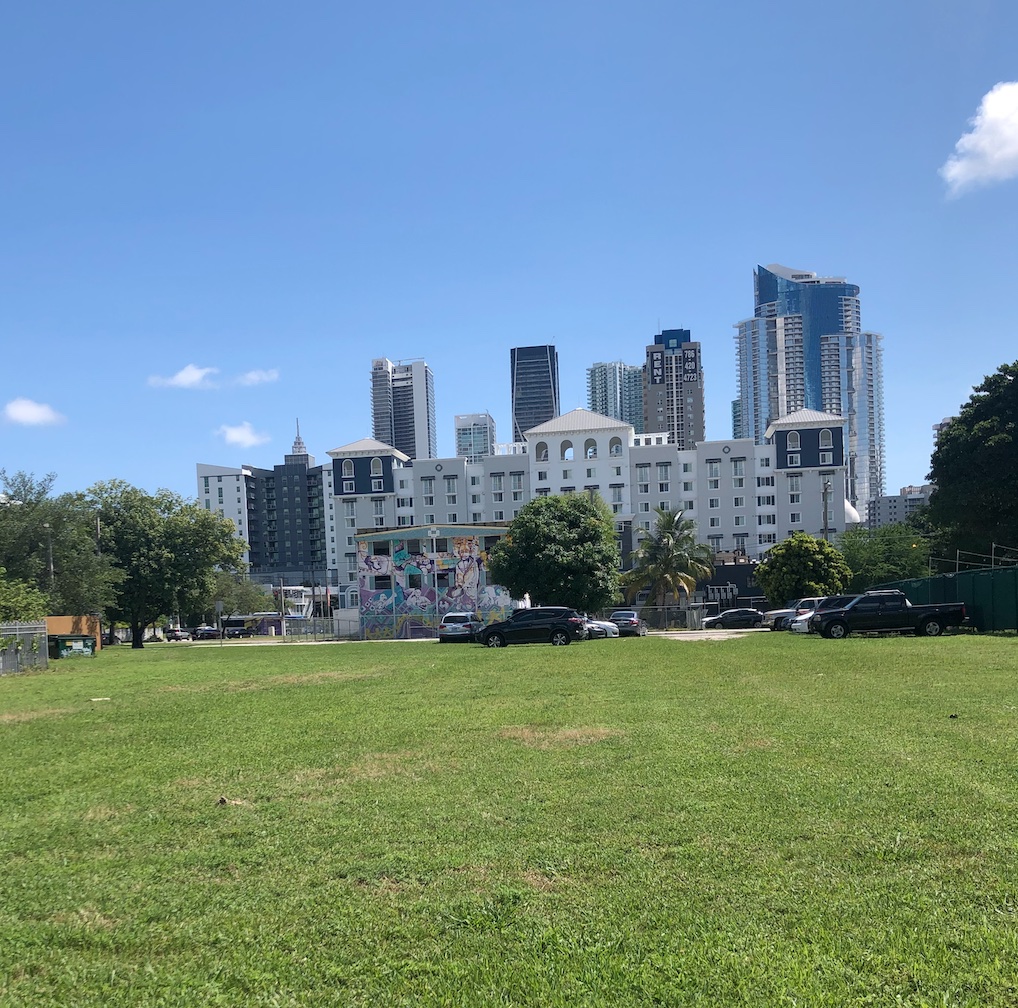
While walking through these historical places, It was evident the way the community felt about the displacement that has been occurring in the area lately, and by that, I mean gentrification. Gentrification is a process where low-income communities go through significant changes done by individuals in higher communities; this causes many individuals originally living there to lose their homes and culture, and history. One of the reasons construction of high-end housing and business is happening is because of the environment, with high sea level we see the wealthy people moving further and further from the beach area, this causes a displacement of people who were already affected by the construction of I95 and also the destruction of what they hold dear their culture and history.
Viscaya As Text

“A World In A World: An Isolated Quilt”
by Joheily Rodriguez FIU at Vizcaya Museum and Gardens
While driving through Coral Gables, it is easy to miss the hidden gem Vizcaya is, nevertheless when driving past the two beatifically symmetrical stones engraved with the name “Vizcaya,” it is with no doubt, a new world has been entered. A world that accepts no rules and believes in the power of now. These beliefs were instilled by James Deering, which are prevalent and vital in the perfectly imperfect city of Miami.
At the entrance, visitors are greeted by two critical figures; to the north side, Bel Vizcaya, and to the south, Ponce De Leon, who were important figures in conquest and settlement in Florida. James Deering related and admired Bel Viscaya and Ponce De Leon; Viewing himself as a conquistador that is here to enlighten by bringing mixtures of European culture and art to Biscayne bay.

The fusion of different European cultures can be seen throughout the entire estate. Soothing and cascading fountains greet guests at the entrance that guide them into the main house. As guests walk down the aisle, their eyes immediately descend into the place due to the symmetrical arrangement of sprays and the descending water pressure, giving a prime example of how James Deering used his knowledge of various cultures. The use of Islamic fashion fountains to instill calm and grounding with a mixture of Spaniard fashion fountains blend and bring a balance and exciting anticipation as to what is to see in the house.
It is essential to focus on the external details just as much as the internal details; by entering Vizcaya, Millions of visitors can experience vast cultural and architectural knowledge.
South Beach As Text
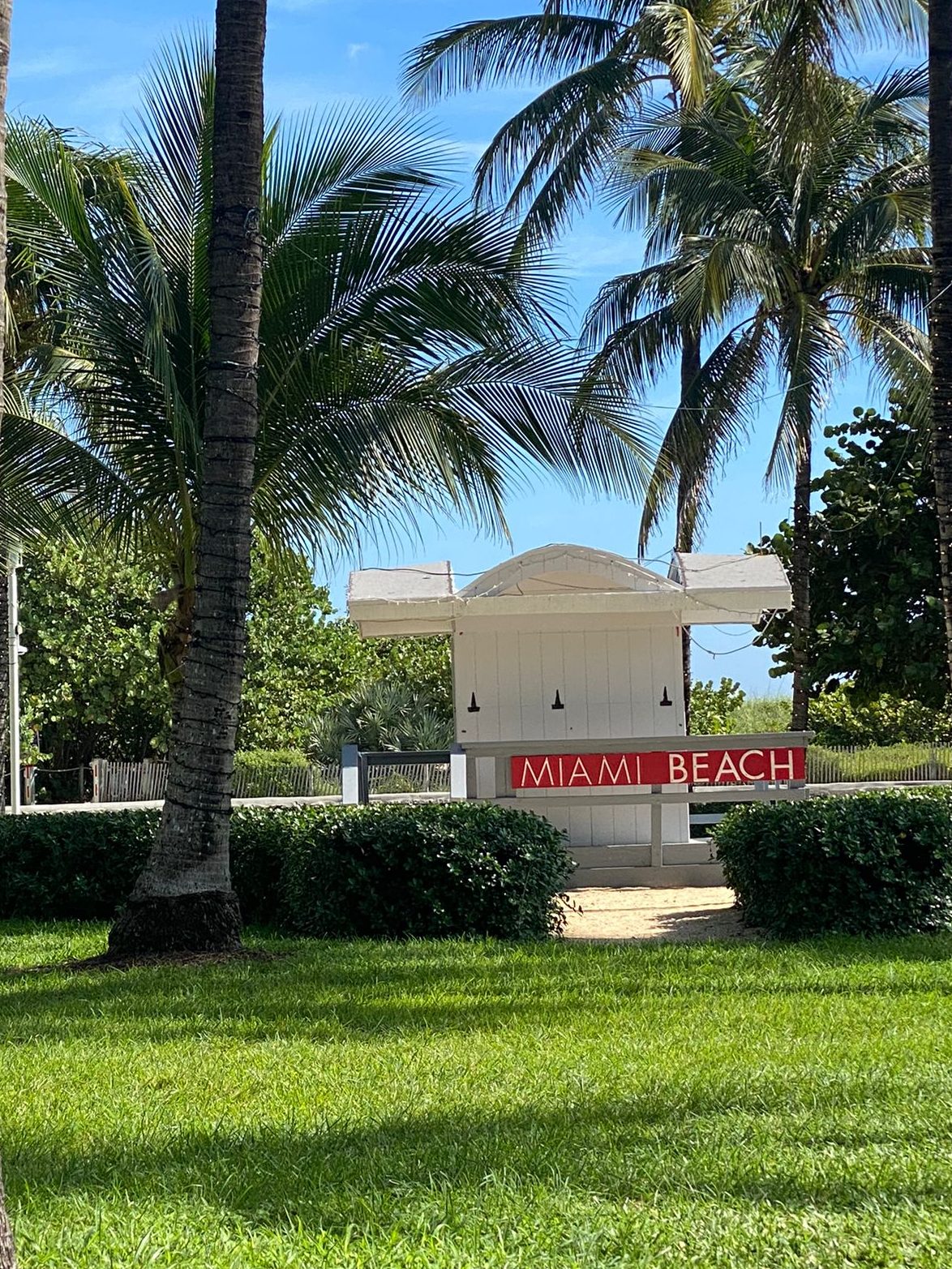
“Behind luxury“
By Joheily Rodriguez of FIU at South Beach
Many tourists when looking for an adventurous and unforgettable experience set their destination to Miami Beach, Florida. South Beach or (SoBe) was originally a barrier island filled with mangroves to protect Florida from hurricanes and other natural disasters as well as nurture young marine life, so how did Miami Beach go from being this natural habitat, filled with swamps and mosquitos to a luxurious adventurous place filled with fun and nightlife? The paradise that we know Miami as today, is all thanks to Carl Fisher who envision that swampy barrier island as the perfect gateway vacation destination. He slowly bought the land and became to clear the mangroves, this was gonna be his safe haven.

The building of this paradise however came at a huge expense, It did not only damage the natural habitat of the area, which today has caused many problems for the city including flooding but it segregated and separated more communities; before this huge development Fisher set forward, both people of color and whites joined together on Ocean beach (Miami beach) on Sundays to have boat trips, lines were drawn and people of color were not allowed to come to ocean beach anymore, taking away the little interactions these two communities had. Jews were also segregated and were not allowed access to certain areas of Miami Beach. Even though carl fisher did indeed bring innovation and lusciousness to Miami beach Florida, let us not forget also the damage and the disruption that comes with economical and social development, which is damage to communities and natural habitat.
Deering As Text

“Before the concrete Jungle”
By joheily Rodriguez of FIU at Deering Estate
Before innovation and development came to Miami Florida, It was thought to be filled with swamps, mosquitos, and dangerous creatures. Even though this was one of the ecosystems found in Miami before 1492, it was not the only one. Walking through downtown Miami, Hialeah, or coral gables, it can be hard to imagine that once these areas were filled with mangroves and forests filled with faunal and floral diversity.
Thanks to Charles Deering who saw the importance of preservation, guests who enter the Deering estate are able to explore and get a feel of what Miami was like in the 1400s. The Deering estate’s mission is to teach and preserve, natural habitats and their species as well as architectural and archeological artifacts. To name a few of the ecosystems Miami had before development we have tropical hardwood hammock, this ecosystem is characterized by the slight shade it gives, and for its higher elevation compared to the surrounding area, there are others like seagrass beds, coastal dunes, salt marshes, mangrove forest, pine Rocklands and others that are declining at alarming rates.
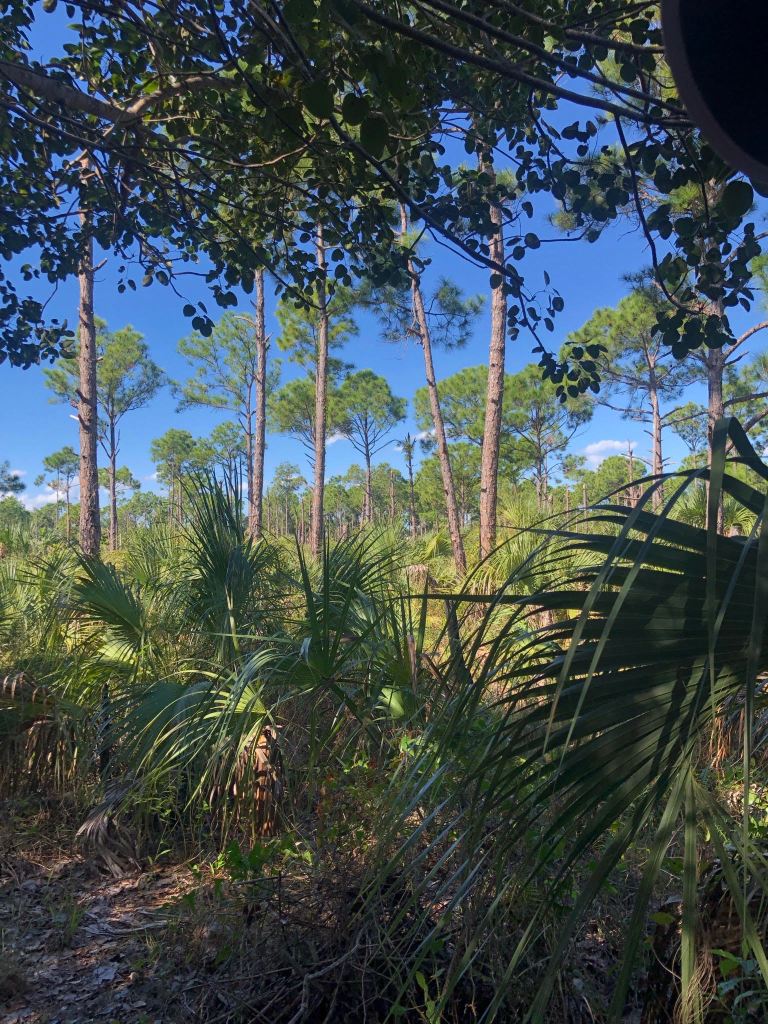
The high rise in populations, as well as constant development in order to meet demands, is causing an extreme decrease in these natural habitats, that are dear to Miami and that would bring severe consequences to Miami socially and economically. Some of the consequences of these decreasing habitats can be seen already, where flooding and high tide are more prominent in Miami, bringing house insecurities and big costly damages.
Rubell As Text

“The house of Mirrors”
The Rubell Museum is a Contemporary Art Museum that was originally a private collection by Don and Mera Rubell; they fell in love with the art of collection and have been collecting for over 50 years. The Rubell’s opened their doors for the public in 2019 in the Allapattah neighborhood of Miami-dade. When entering the Museum and walking around and viewing the art, you can’t help but think you are walking in a house of Mirrors. When looking through all the thought-provoking and commentary art, you can’t help but find some of yourself in it.

The Museum has two very reflective art pieces created by the iconic artist Yayoi Kusama. Kusama’s galleries are top-rated and are experienced worldwide by people who wait hours to see her artwork. The first one is named “where the light in my heart goes, 2016,” and the second is the “infinity room- let’s Survive Forever, 2017”. Both Art pieces can be interpreted in many ways, but in my eyes, they both are reflective pieces that allow us to see the artist who she is and her vision, but it also allows us to see ourselves, who we are, and what we are we want for ourselves. The pieces are majestic and incite emotion out of anyone that has the opportunity to experience them.

Another piece that caught my attention was a piece painted by Kehinde Wiley, who glorifies black people and culture through his art. It portrays a black man covered by a white silky rope, the god-like posture and greek detail highlight the beauty of the black man, which is very rare to see and to be celebrated. The Museum was exciting and captivating, definitely a must to visit.
Everglades as Text

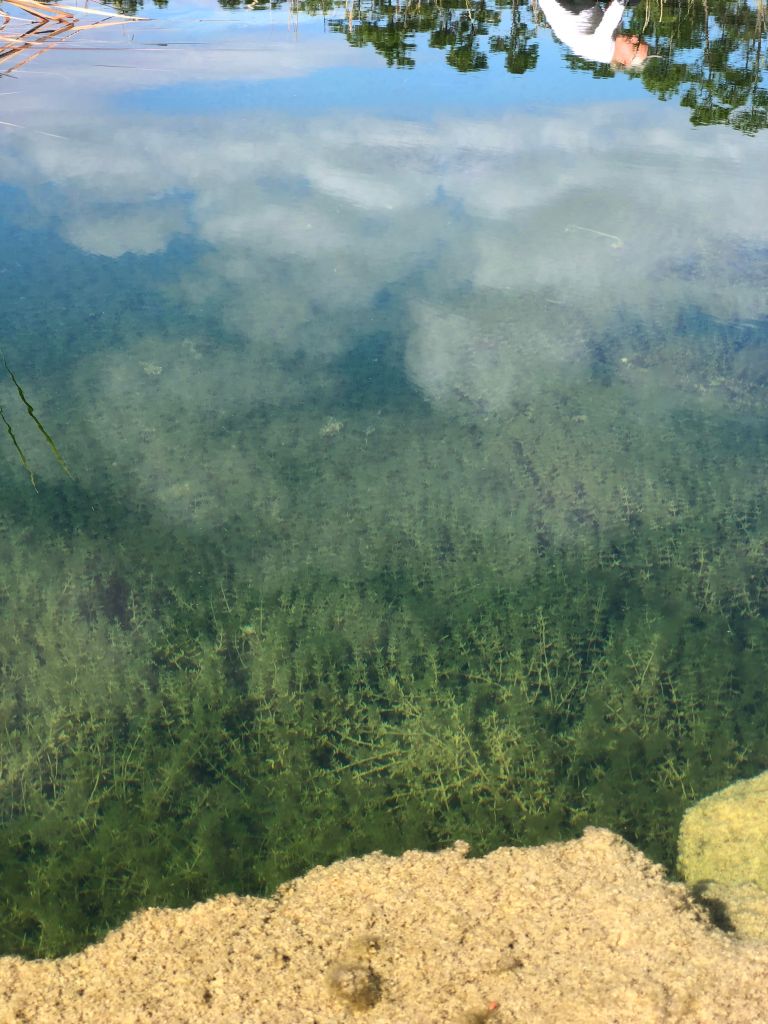


” A Place More than Mangroves and Alligators”
The Everglades National Park was established in 1947; Thank you to the incredible efforts of scientists and conservationists that saw the immense diversity and uniqueness this ecosystem holds. The Everglades contains many fauna and flora, each in its unique niches, such as Palm Trees, marshes, cypress trees, vultures, turtles, fishes, owls, and much more. Even though of what we have learned in early education, The everglades is not only home to mangroves and alligators.
Our Class, “Miami in Miami,” took on this trip to discover the natural Everglades; this trip was led by Ranger Jennifer, Ranger Dylann, and Professor John Bailly. We came across many different florae; however, I was shocked to learn about periphyton, which was present in vast quantities. Periphyton is a combination of algae and bacteria which act as a filter for the everglades. This material can process thanks to photosynthesizing algae by taking in carbon dioxide and releasing oxygen as a byproduct. Despite the everglades seeming like a place full of muddy water, you can see the wonder this material is doing once inside. The water in the everglades was clear, and throughout it, you could see the many aquatic plants that call this place home. During our slough slog, we also went into an alligator hole. There we did not only see what the Ranger described as the pack’s male but also an owl who was resting from its probable nocturnal activities.

Overall the Everglades is a fantastic place, full of life, magic, and, believe it or not, fun! If you enjoy nature and getting dirty, check out the everglades and sign up for a slough slog, you won’t regret it!
Coral Gables As Text.
“More than meets the eye”
By Joheily Rodriguez of FIU at Coral Gables.

George Marrick had a clear vision of how Coral Gabels will look and feel. To make his dream a reality, he knew he had to paint the same picture through the use of imagery to those that would inhabit Coral Gables. In 1899, George E. Merrick came from Duxbury, MA, to Miami in search of his oasis. Merrick drew inspiration from Spanish architecture. The city of Coral Gables was incorporated on 29 April 1925.
Interestingly, Marrick had never been to Spain; instead, he pulled inspiration from trips to Central America and the Caribbean. While walking through the sidewalks of Miracle Mile and Alhambra circle, I noticed a mixture of cultures. While observing the Giralda Tower and commenting on its influence by Spanish architecture, an older man spoke in french, and our professor responded in french. The interaction between the man and my professor reminded me once more of the diversity in not only Coral Gabels but just in Miami.

During our walking tour, we visited many places. First, we saw the Coral Gables Museum, which Phineas Paist and Harold Steward designed in 1939. An interesting fact about this historical destination is that it used to be the old police and fire station during the Great Depression. The Police and Fire station was created as part of a program to keep Americans at work to alleviate the effect of the Great Depression. They use local materials and local artists and workers to make this place reality.
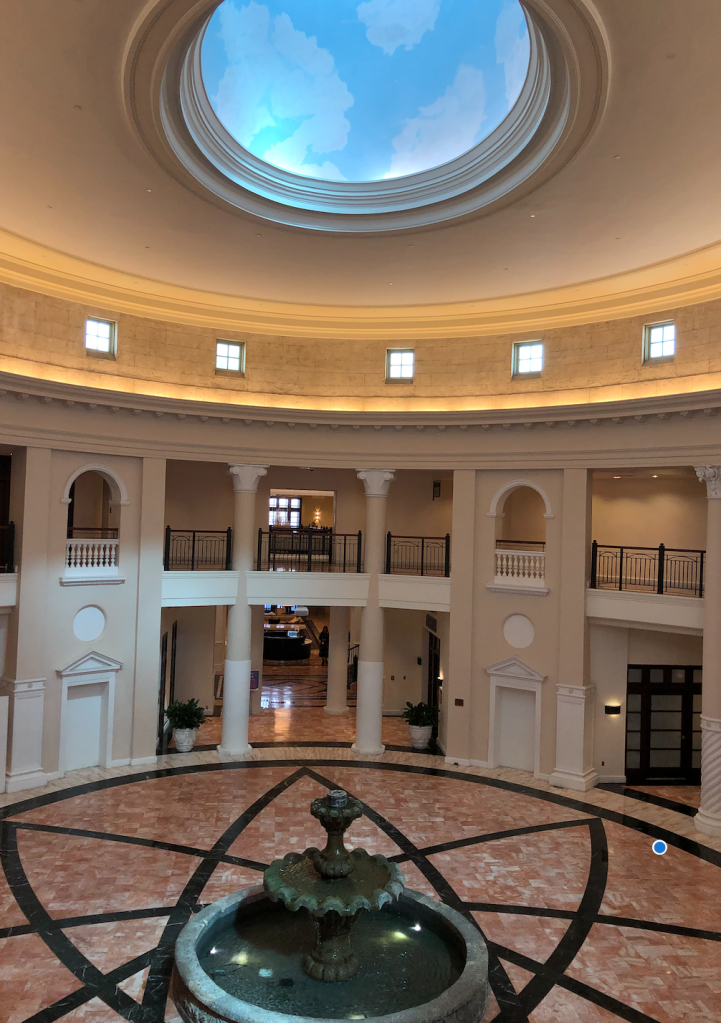
Two Historic Places in Coral Gabels that appealing me the most were the Colonnade Building and the Coral Gables Elementary School. While walking on miracle Mile, you see busy cars and busy streets. It seemed to stop when entering the Colonnade Building; it was almost as if you were in church, a quiet and majestic place, where time seemed to stop. The Coral Gables Elementary school, like many buildings in Coral Gables, employs the Mediterranean Revival style. I liked how much sunlight is around and how students can be around fresh air and sunlight while walking from class to class, which I feel should be implemented more in Public schools around Miami.
If you want to learn more about Miami, Coral Gables is a crucial point to stop by. Its history is a significant point for delicious foods and luxurious stores.
River of Grass as Text






All other photos taken and edited by Joheily Rodriguez// CC by 4.0
Reflection and Balance in the Everglades.
By Joheily Rodriguez of FIU at Everglade National Park, Feb 16th, 2022.
The everglades is a popular spot in South Florida where people can become one with nature. Many are searching for a bit of adrenaline and others to learn about Florida’s native fauna and flora before development and innovation. I have been to the Everglades before during a previous class with professor John Bailly. Even though I have been here before, I was taken on a different journey.
We, as a class, drove a couple of miles into the Everglades, parked on the side of the road, and began our adventure. We hiked for miles into territory that not many individuals trail; it was just nature and us. At first, I was a little concerned, but I enjoyed this experience. Society has made us feel how uncomfortable being in nature is and how ugly it can be if we do not modify it.
Undisturbed, I thought the area would be more dangerous than anything else. After just a couple of steps in, I noticed that nature is breathtaking all by itself, especially when left untouched. We visited an old structure that was about a hundred years old during this trip, left to deal with nature. What was left of it was nothing but cement blocks and rusty pieces of metal for windows. Who would have believed that we would find this tomato farmer’s house standing after walking for miles away from society and seeing nothing for miles in the everglades? We entered the structure and even climbed it. To me, it seemed like a glimpse of hope that perhaps we could find balance with nature.
Wynwood As Text


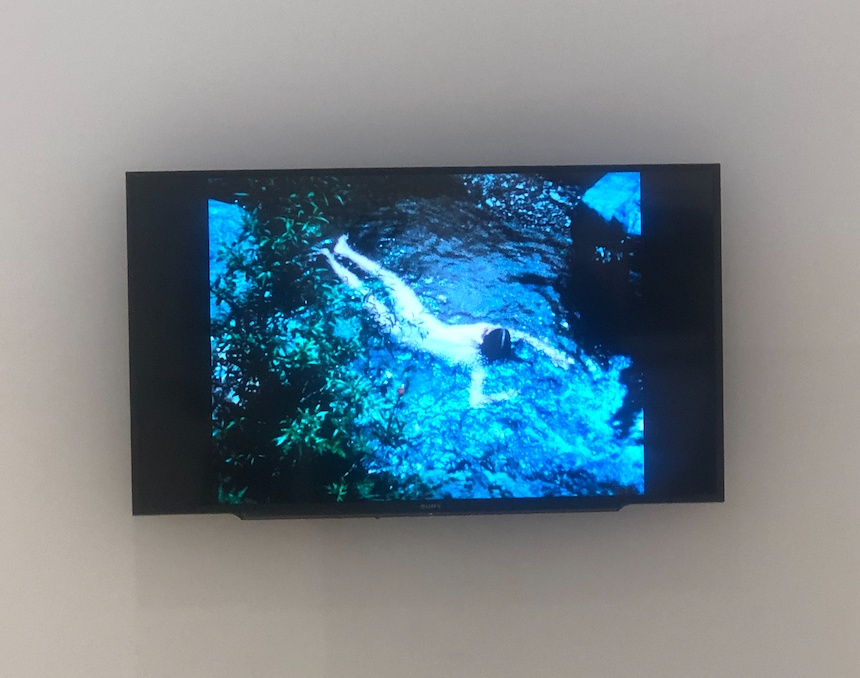

“ what is art.”
By Joheily Rodriguez of FIU at Wynwood, March 9th, 2022.
While walking through the streets of Wynwood and visiting private collections of art, I became very interested in the question: what is art, and who gets to decide what art is. Wynwood is a mesh of different artists who have other ideas of what art. During our time in Wynwood, the In Miami in Miami class explored contemporary art through two private galleries.
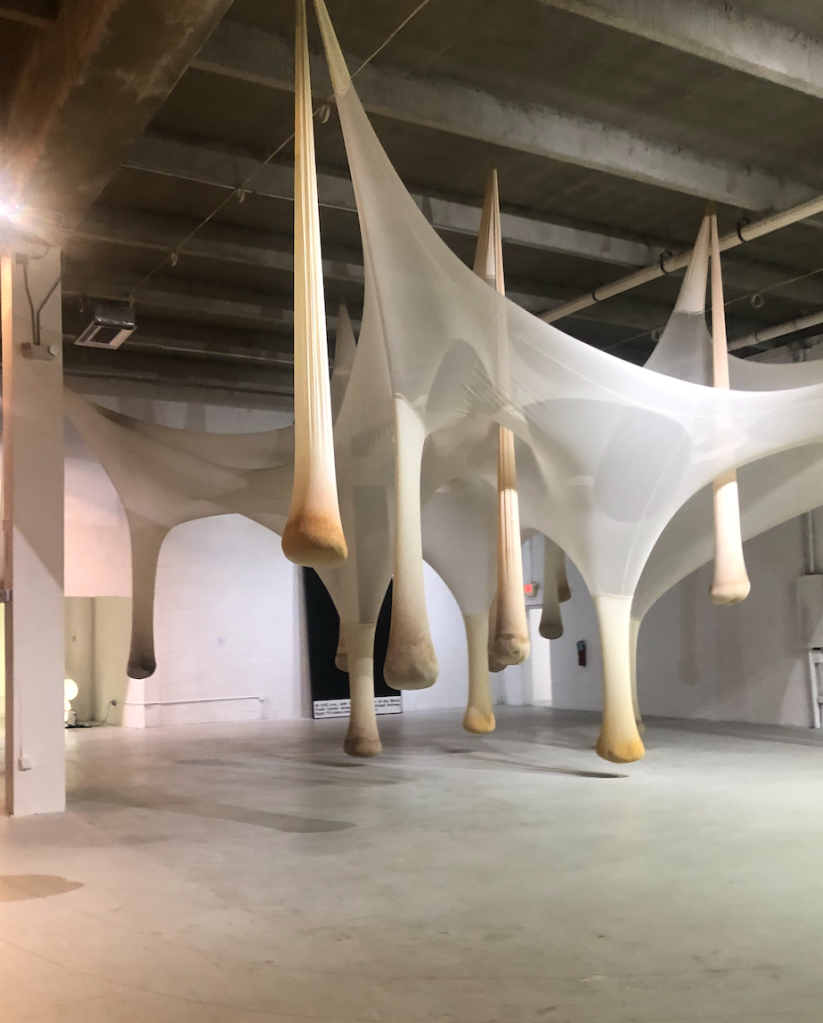
We visited Arte Povera, post-Italian art from the Margulies collection. One had a stretchable and flexible material in which the Artist placed spices. I enjoyed it since it added sight and smell.

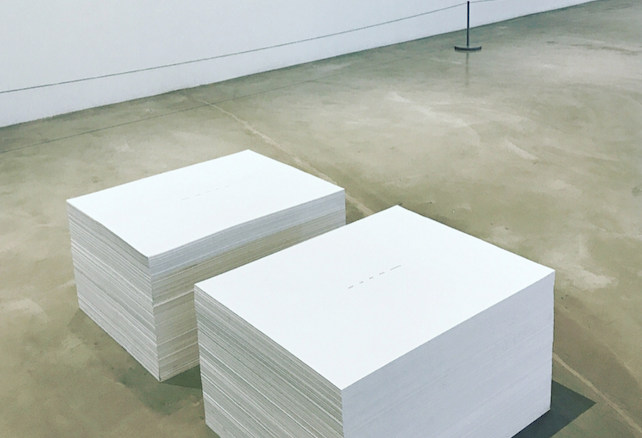
Next, we visited De La Cruz Collection. The De La Cruz collection was fascinating; Two pieces by the same artist sparked my interest. Both pieces are named “untitled” by Felix Gonzales-Torres. The first is two stacks of papers; one says “nowhere better than this place,” and the other says “somewhere better than this.” the second piece is an endless supply of white mint candies against a corner. I enjoyed how Felix Gonzales changed the way we interact with art now, you cannot only view the art and appreciate it, but now you are taking a piece of it with you; you can touch it like the stacks of papers or even taste it in the case of the white candies.
Contemporary art breaks barriers and changes our perspective on what art is. I encourage you to check out the Margulies and De la Cruz collection for a pleasant and perhaps new experience
Coconut Grove As Text

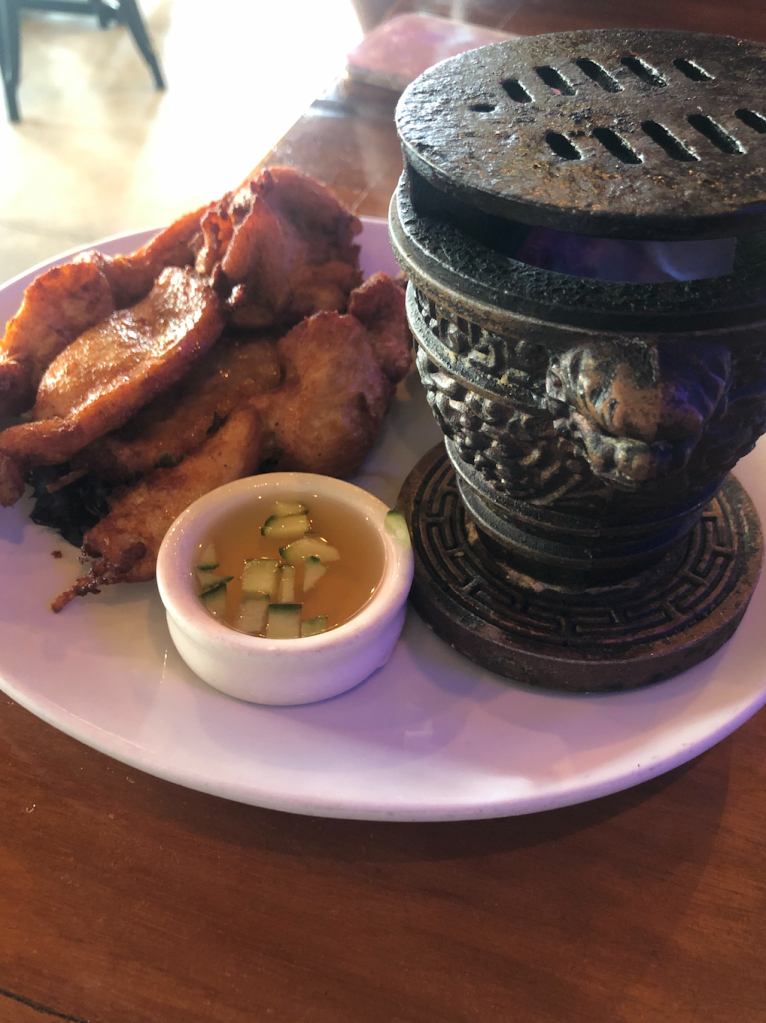
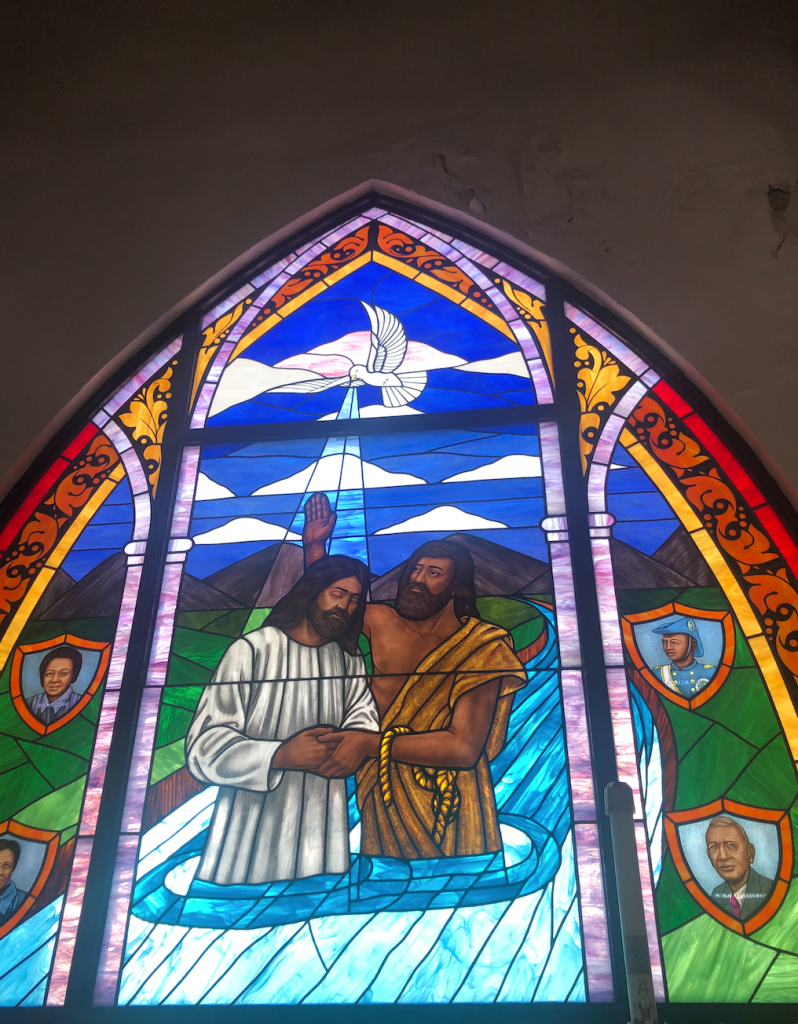

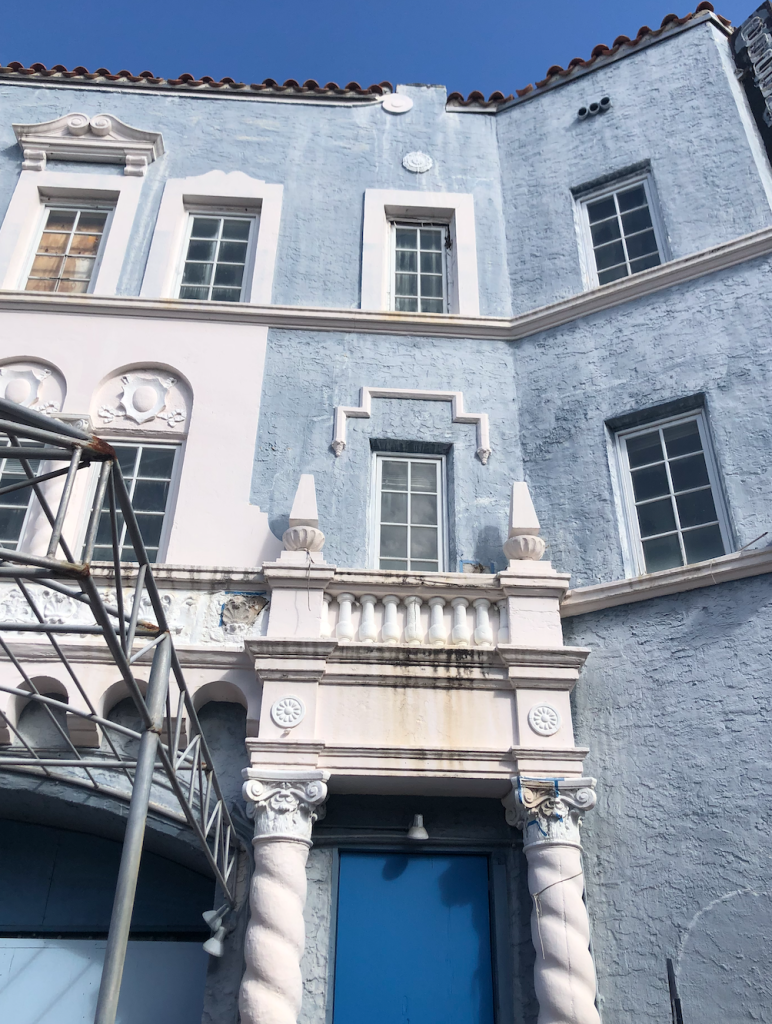
“A place full of fun and History”
By Joheily Rodriguez of FIU at Coconut Grove, March 23th, 2022.
Coconut Grove is a neighborhood of Miami older than the city of Miami, incorporated in 1896. In the 1880’s it was a predominantly Bahamian community after the relocation of the Tequesta and the Seminoles. In the class Miami In Miami, we took a lovely journey through the streets of the coconut groove, appreciating and discovering its most iconic sites. Two places, in particular, were intriguing and full of History to me.
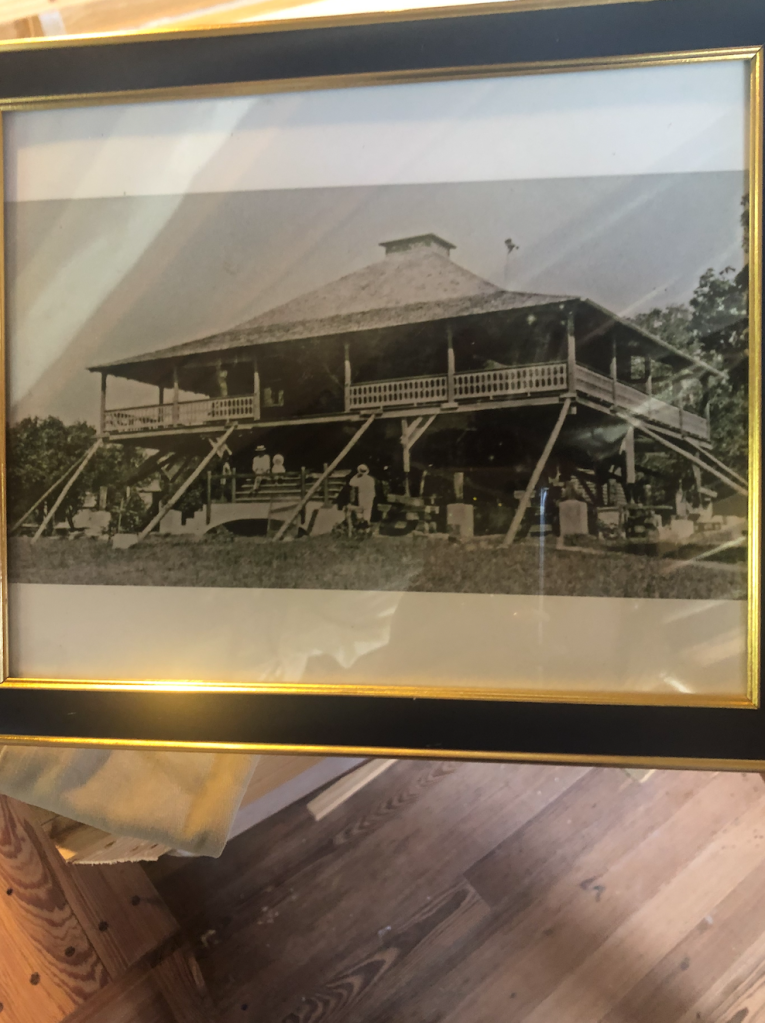
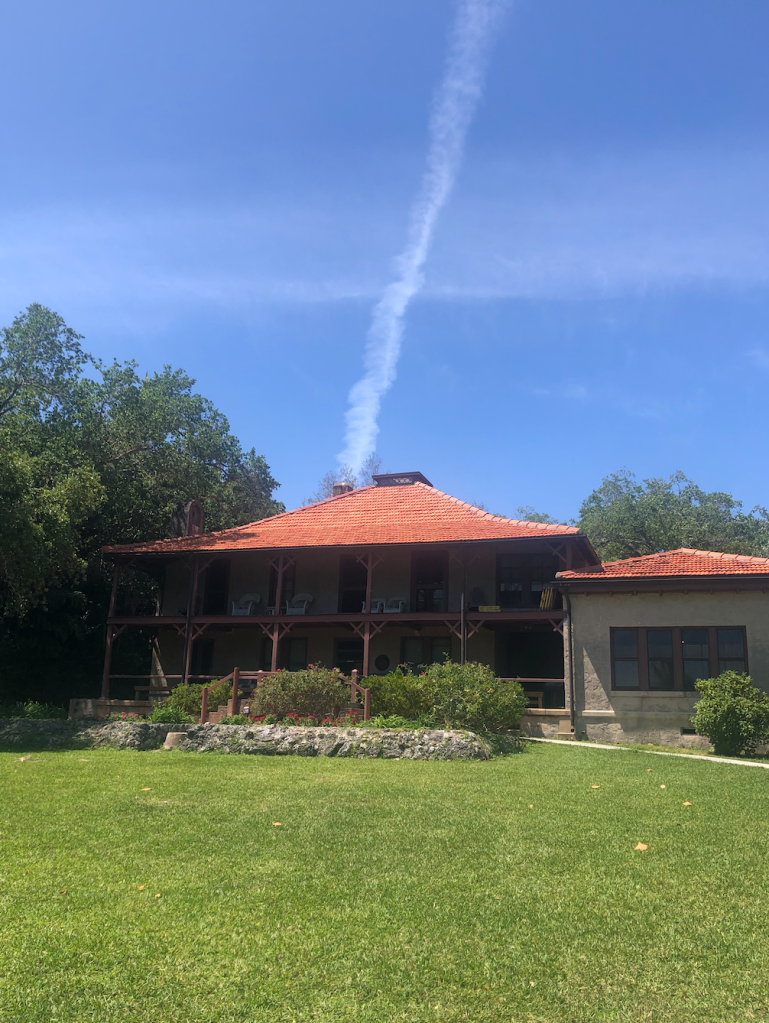
The first place is the Barnacle. It was built in 1891 by Ralph Middleton Munroe, who had come down from upstate due to his wife deteriorating disease. Sadly his wife came to pass a year later. Munroe loved to build boats. He came up with the perfect idea of a house by the water and made a boathouse in 1887. In 1894 he re-married and had children. The Barnacle is the oldest home in Dade County that is still standing on its original site. An interesting fact about this house is that the second story was added after Munroe added the first story by raising the house with boat parts and constructing it to keep his roof which he grew fond of.


The second site was the Mariah Brown House. In 1851 Mariah Brown migrated to the United States from the Bahamas. As a single mother of two, she purchased this land from Joseph Frow for $50. This is a very inspiring story of how a single black mother was able to become a homeowner when segregation was still very much active.
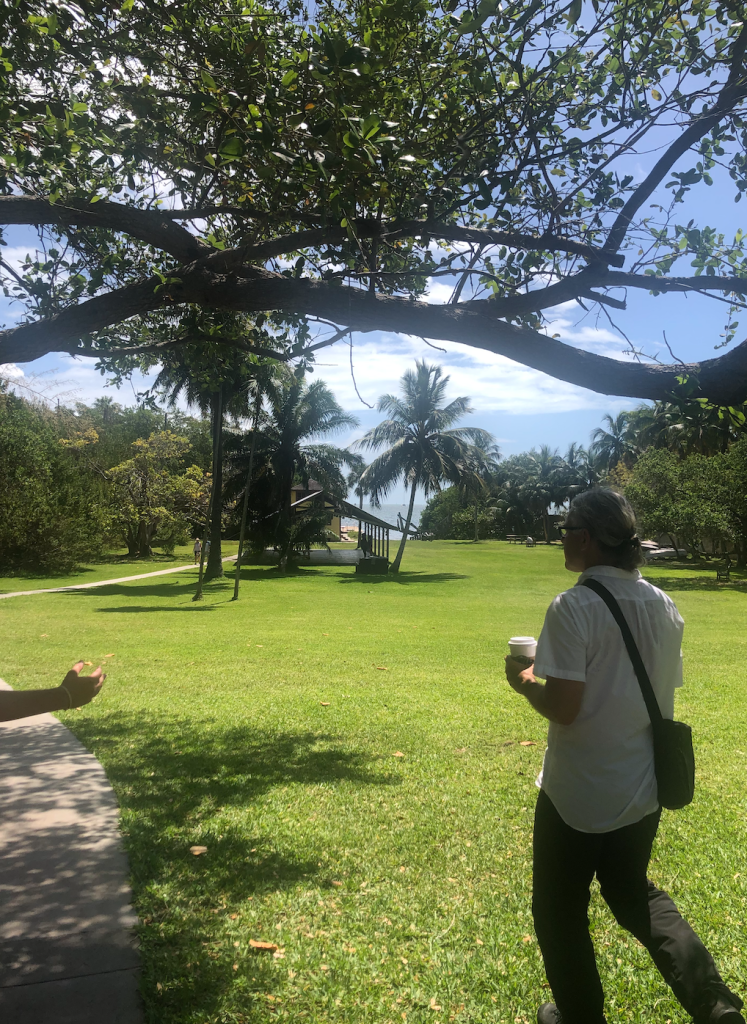
Next time you are in Miami, check out the real Coconut Groove 🙂
Key Biscayne As Text

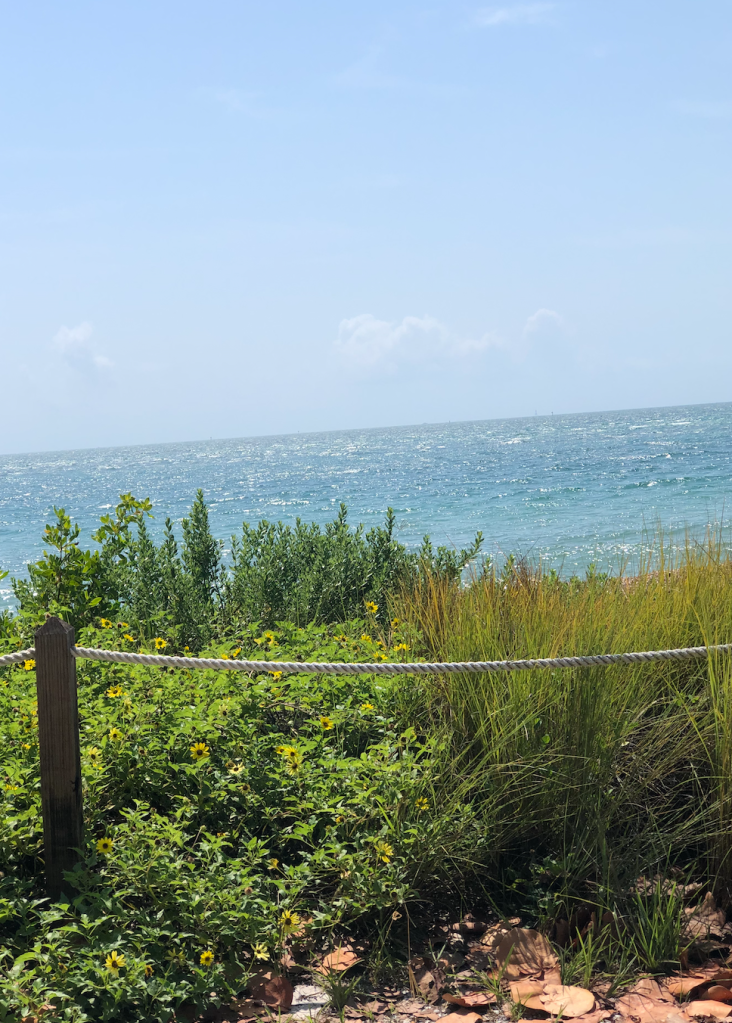
“A Place With a little Bit of Everything”
By Joheily Rodriguez of FIU at Key Biscayne, April 6th, 2022.
The Bills Baggs Cape Florida State Park is a relaxing conserved area filled with history and activities for all ages and sizes. The Park is known for having one of the 10 top beaches. The park/beach is home to a small town known as Key Biscayne, where those who reside seem to enjoy a tranquil life on the city’s outskirts. In the class Miami in Miami, we explored the history of the state park and played a role in improving it.
The Park contains activities such as Boat camping, enjoying the beach, Picnics, Paddling, Fishing, Biking, bird watching, and much more. While driving through the Park to get to the beach area, I noticed the difference between this beach and South Beach. Key Biscayne’s beach seemed more environment-friendly and aware. Aside from providing activities for everyone to enjoy, it also conserves species/ecosystems in danger and history. According to their website, the lighthouse located in this Park is the oldest building in south Florida; built-in in 1825, it served as a guide to those traveling by boat at night to find their way to south Florida. Ponce De Leon touched ground in the Park and named the area the Cape of Florida, leading to his first Spanish expedition to Florida in 1513. Interestingly, this island served as a secret meeting place for enslaved people and Black Seminoles to meet sea captains to flee to the Bahamas and enjoy a life of freedom. (Key Biscayne Chamber)

I recommend you visit Key Biscayne Beach if you are looking for a day full of fun and history

